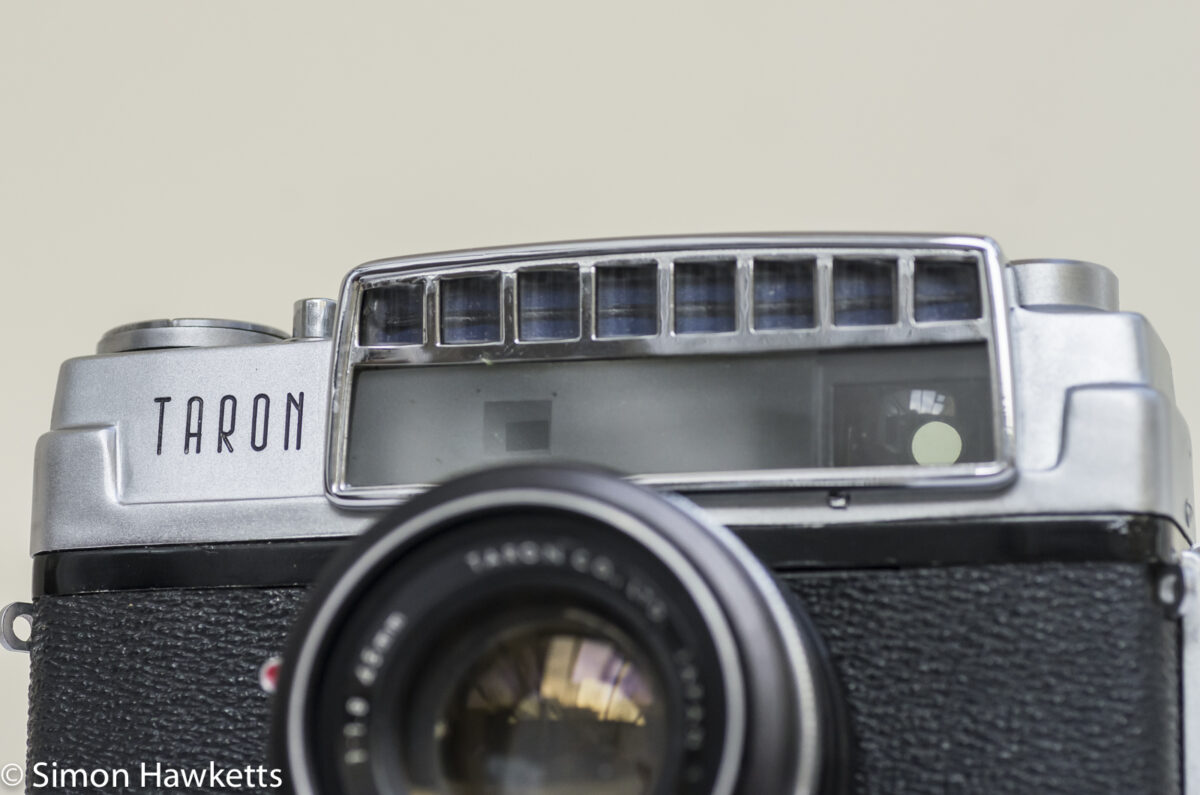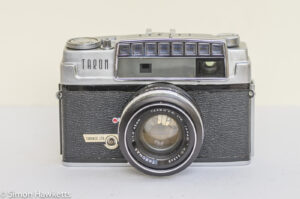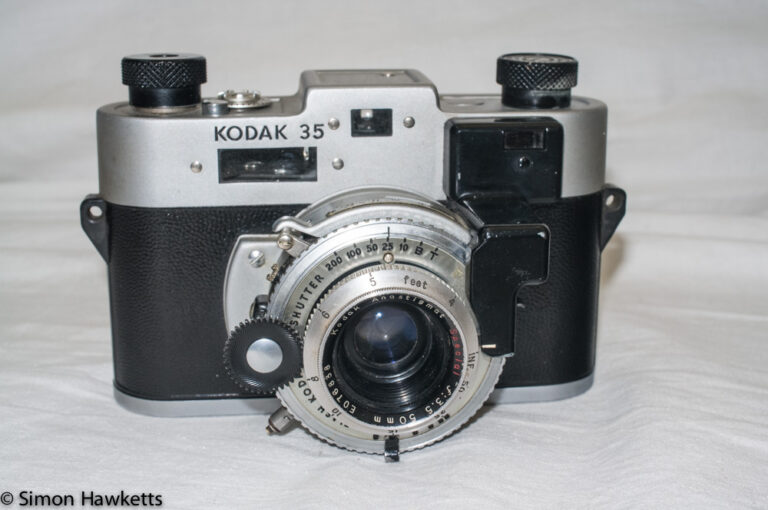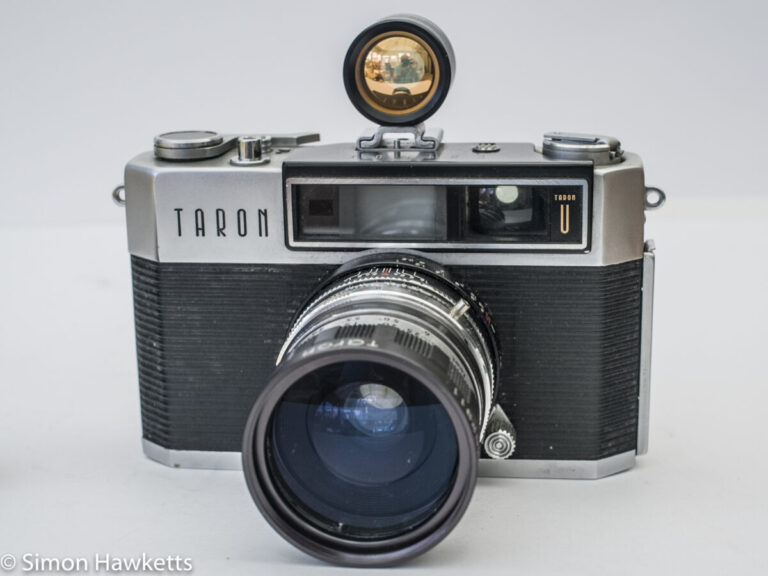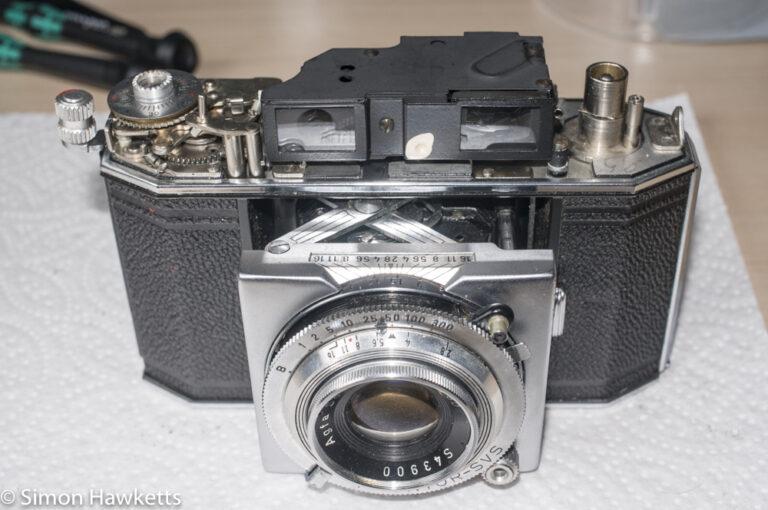Odd looking Taron Eyemax 35 mm rangefinder camera
This is a review of the Taron Eyemax, an odd looking early 35 mm rangefinder camera made in about 1961.
Taron Eyemax Images
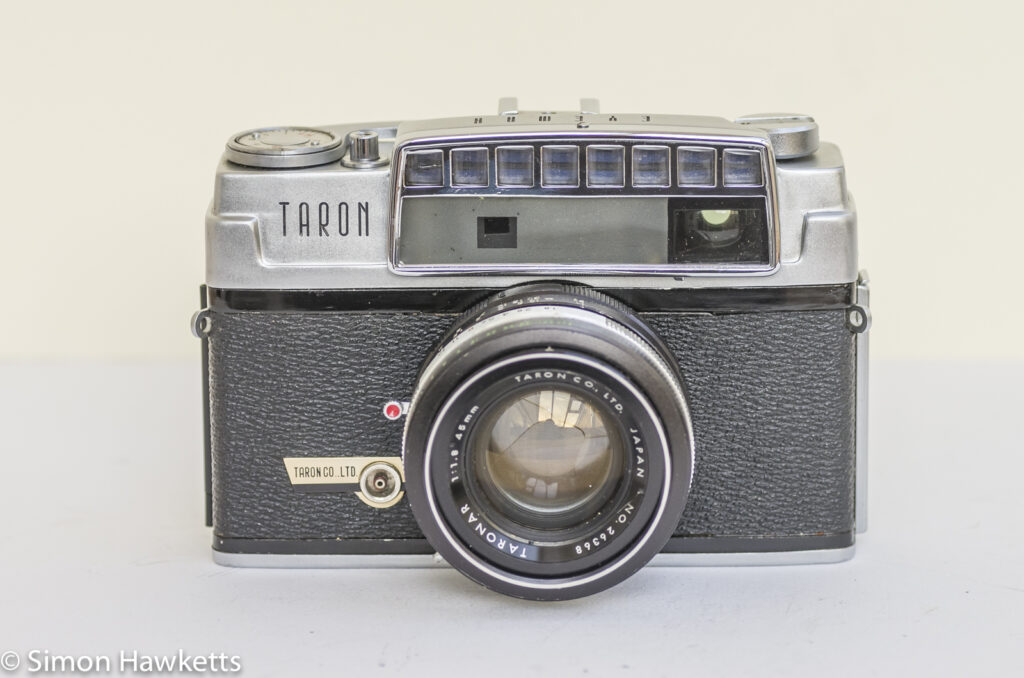
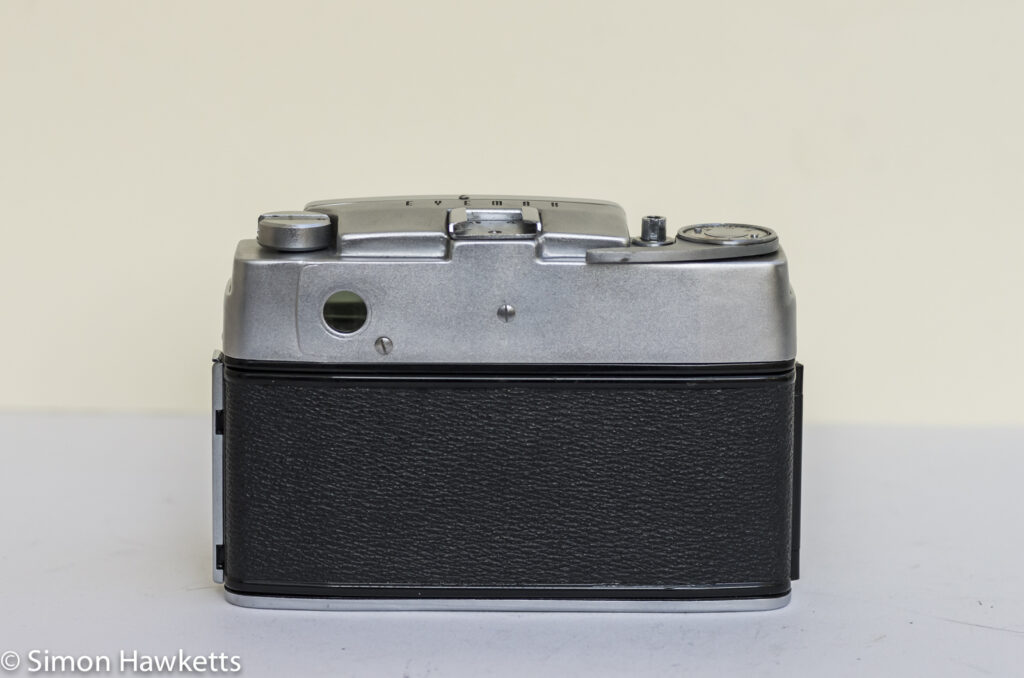
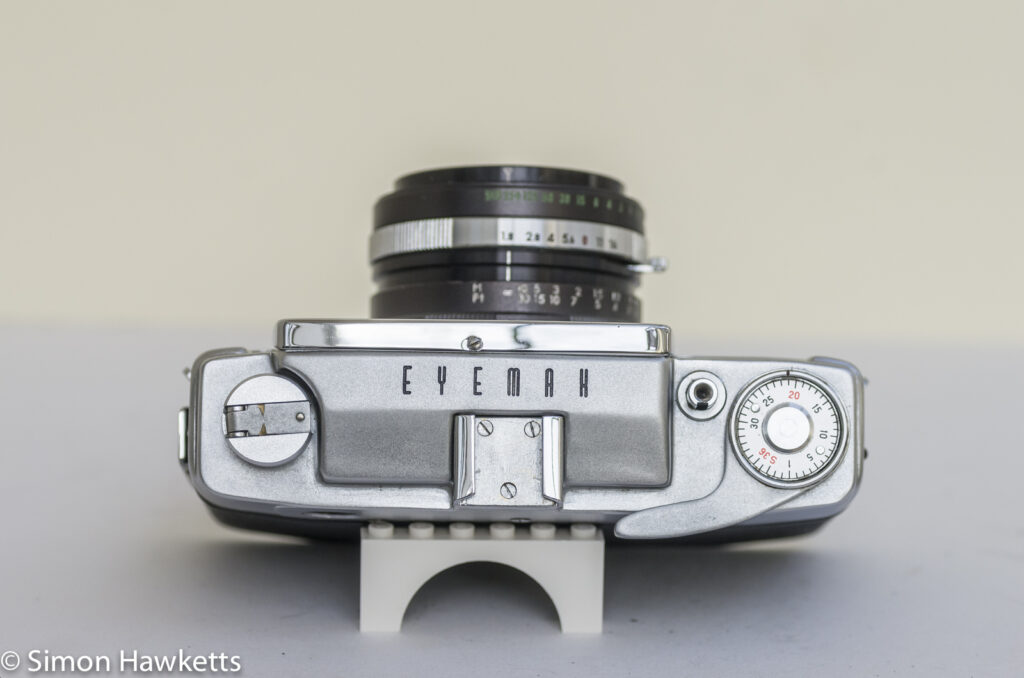
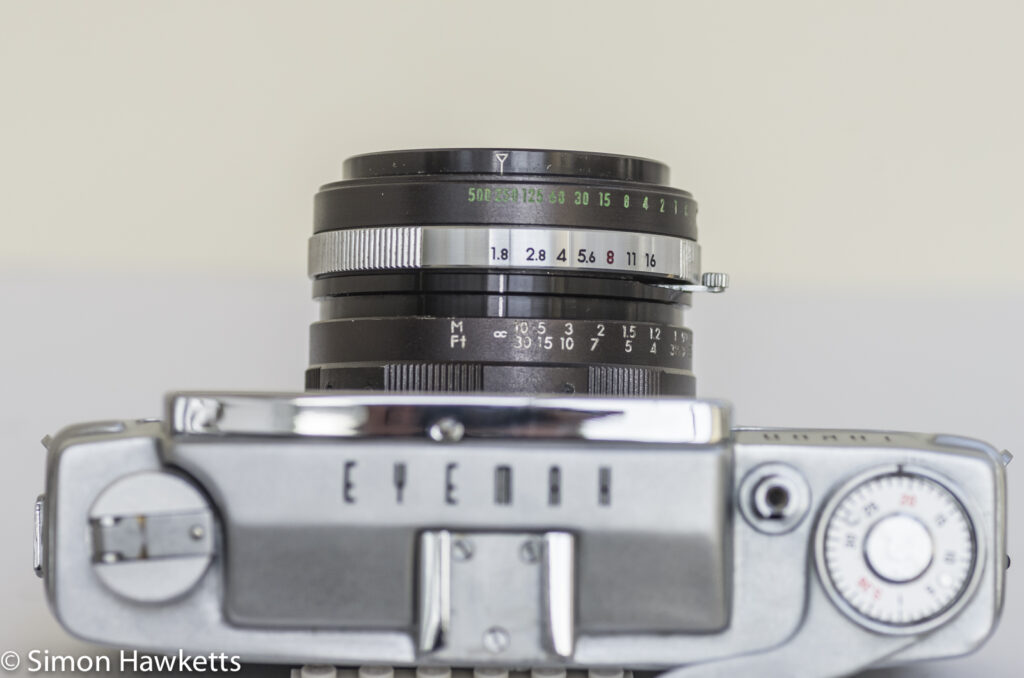
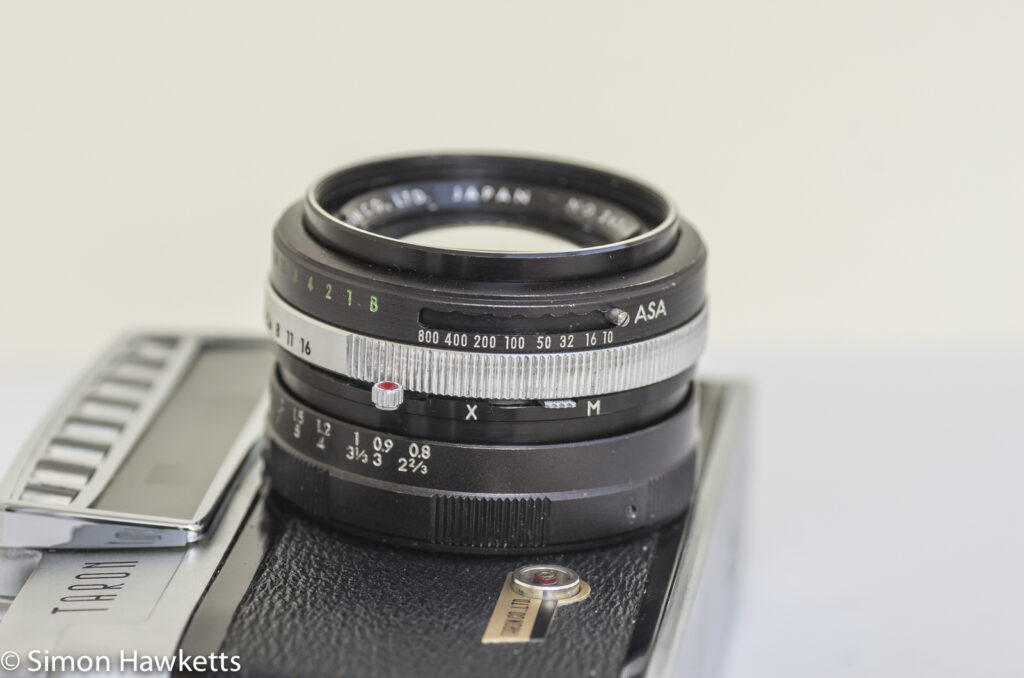
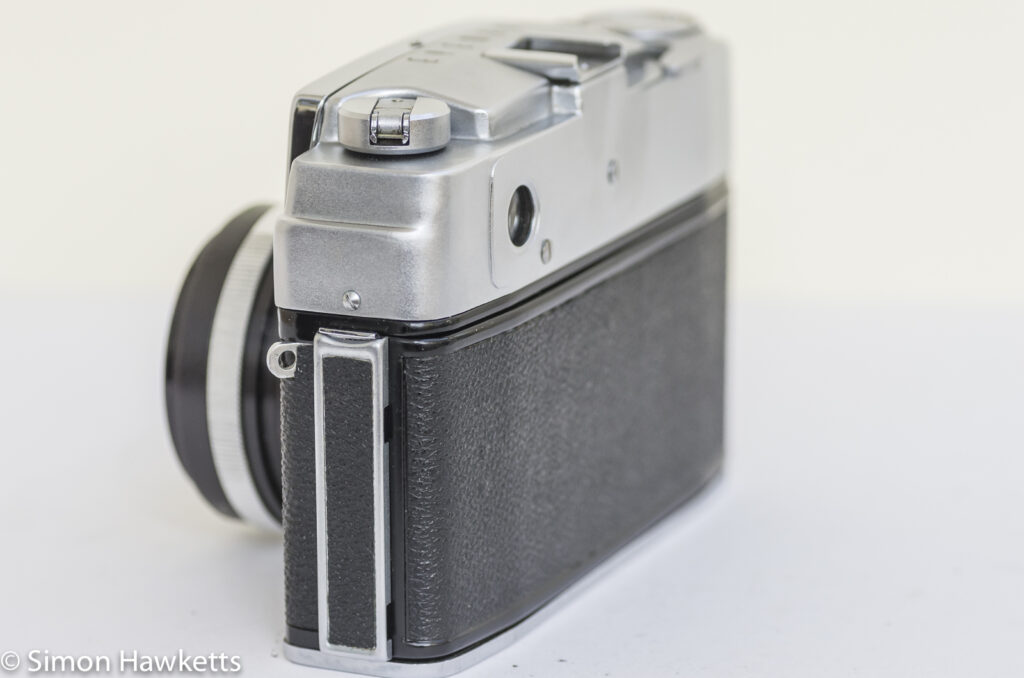
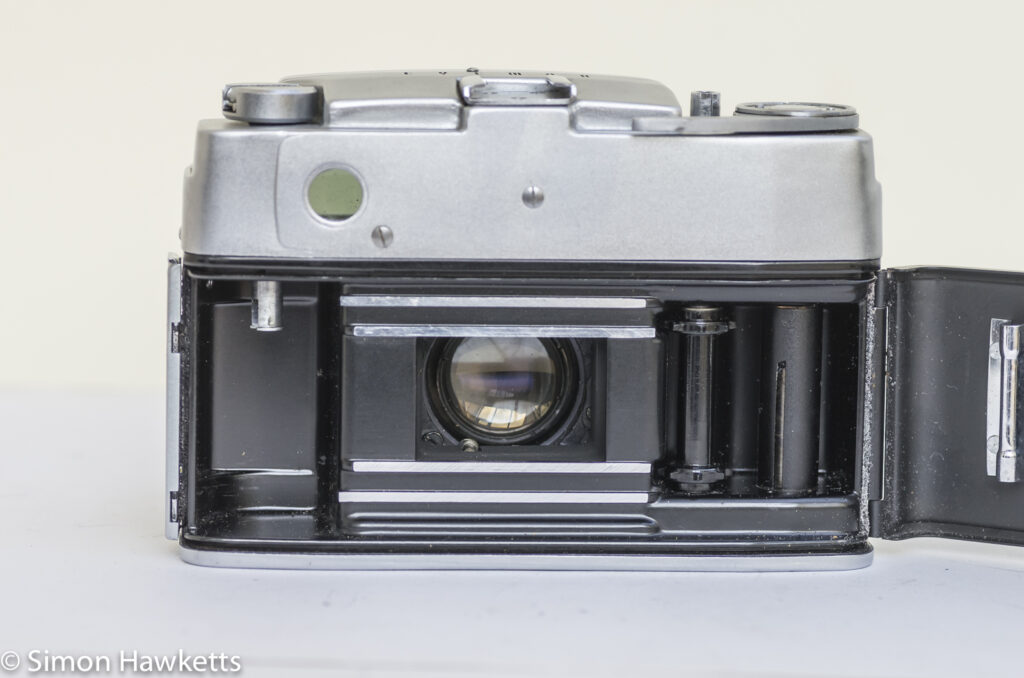
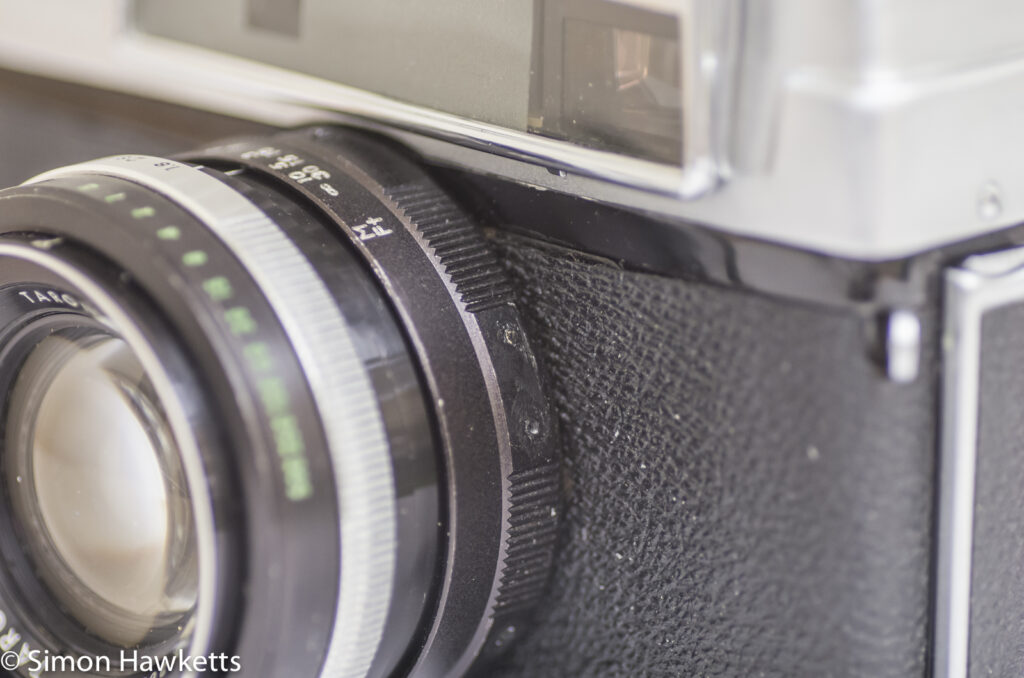
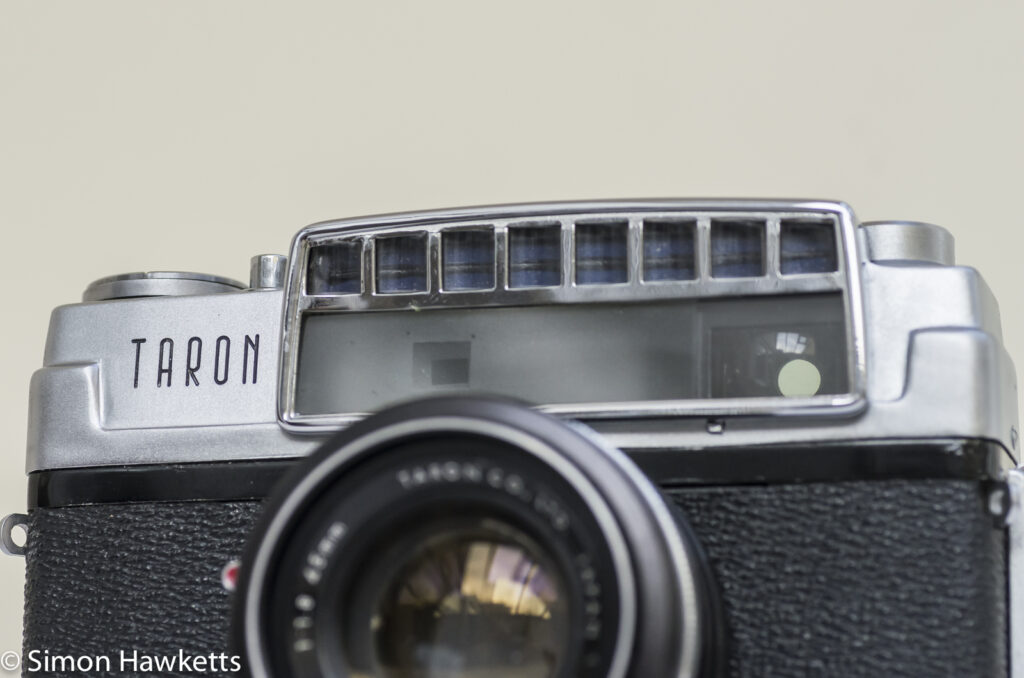
My Taron Eyemax Camera
I saw this camera on eBay and was interested in it for a couple of reasons. Initially, because I have two other Taron cameras and I always like to add new examples to a make I already have, but mostly because it is a distinctive looking camera.
In fact, when I found it on eBay it was described as a Taron Eyemah, and if you look at the picture here of the top of the camera it does look a bit like Eyemah, especially if you have no other supporting literature or knowledge. Anyway, it had no bids and a starting price of only £3.99 and that’s what I got it for.
When it turned up I found it is in pretty good cosmetic condition, although on closer inspection I’ve discovered there is some mechanical damage. By looking at some other pictures of the same camera on Flickr I find that the focus handle is broken off the lens. Although that doesn’t stop the focus being used, it makes it more tricky to focus because without the handle you need to grip the lens barrel, and invariably I find I’ve pushed the self-timer lever as I’ve focused.
There are a couple of normal points of failure on these style of camera, especially ones of this age. One is the shutter which often doesn’t run at slow speeds or has a sticky aperture, and the other is the light cell which loses its sensitivity to light. On that front, I have a success and a failure. The shutter is a success because this example seems absolutely fine, with the aperture blades opening and closing without hesitation and the shutter timings seeming to be about right as far as I can tell.
The light cell is another matter, or rather the exposure measuring system is another matter. To be truthful, the light cell does seem to respond to light, but the match needle system in the viewfinder isn’t affected by changes to the aperture or shutter speed. It’s possibly an electrical problem – I’ll need to get the covers off and have a look.
The rangefinder is a bit dim, but again that is a standard problem with old rangefinders. When I get the covers off, I’ll see if I can clean the rangefinder mirrors as well.
If I wanted to run a film through the camera, I would need to also replace the light seals because they have disintegrated quite badly.
Taron Eyemax description
I couldn’t find any handbook or information about this camera anywhere on the web, so these are my findings and assumptions about the workings of this camera.
The camera gets its distinctive look and name from the bulge above the viewfinder, which houses the selenium cell for the built-in light meter. At the time these type of light meters were often referred to as an ‘electronic eye’ so the name Eyemax therefore becomes a natural choice.
The output from the cell drives a meter needle which is visible in the viewfinder, and the exposure is set by altering the aperture and shutter speed rings on the lens until the meter needle aligns with a fixed marker at the top of the viewfinder. On my particular camera this doesn’t work, but since I can’t find any ‘auto’ setting, and there is no way to convert a meter reading into an aperture / shutter combination, I’m pretty confident this is how it should work.
Focusing is achieved with a rangefinder visible in the centre of the viewfinder. There is quite a short adjustment range which covers the full focal range of the camera, about 0.8 m to infinity. The rangefinder window is quite a distance from the viewfinder window, which leads to a good amount of separation of the images, and therefore accurate focusing.
The shutter speed range is typical of a camera of this age, from 1/500 sec to 1 sec with a B setting and the lens is nice and fast with apertures ranging from f/1.8 to f/16. This gives an EV range of 2 to 17 if the B setting is ignored and the ASA range of 10 to 800 is also typical of cameras of the day, matching the speed of film commonly sold at the time. Being a leaf shutter, it’s synced for flash at all speeds, and has a sync socket on the front of the camera with a switch for X or M sync on the lens.
Talking of the fast lens, it’s a Taronar 45 mm f/1.8 unit which has a purple/yellow reflection under light, suggesting it has some sort of reflection reducing coating applied. I don’t know if it’s single coated or multi-coated, but going by the date of manufacture and the brightness of the reflection, I would think it’s probably a single coating.
There is a frame counter built into the top of the frame advance lever, which has to be set manually as the camera is loaded with film.
Taron Eyemax Specifications
- Taron Eyemax 35mm rangefinder camera
- Made in Japan by Taron in about 1961
- Shutter speeds 1sec to 1/500sec + B
- X & M flash sync via socket on front panel
- Large selenium cell light meter with match needle metering visible in viewfinder
- Rangefinder focusing
- User set frame counter
- Cold shoe accessory socket
- Off centre tripod socket on bottom
- 45mm f/1.8 Taronar coated lens
- Ser No 26368
Discover more from Everything Vintage
Subscribe to get the latest posts sent to your email.

